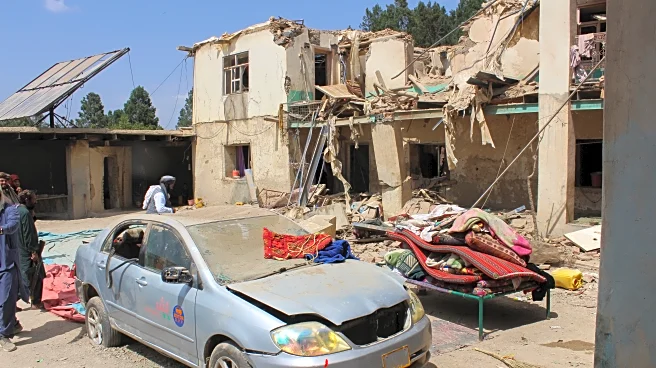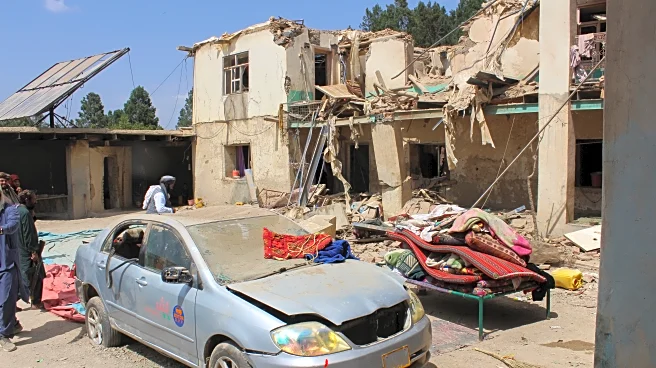What's Happening?
A 6.0-magnitude earthquake struck eastern Afghanistan near the Pakistan border, resulting in over 200 fatalities and hundreds of injuries. The quake occurred just before midnight, with its epicenter located northeast of Jalalabad in Nangarhar Province. Rescue operations are underway, but efforts are hindered by landslides and difficult access to remote areas. The United States Geological Survey reported that nearly half a million people experienced strong shaking, which can cause significant damage to poorly constructed buildings. The earthquake was also felt in neighboring Pakistan, and several aftershocks have been recorded.
Why It's Important?
The earthquake highlights the vulnerability of Afghanistan's infrastructure and the challenges faced in disaster response. The region's history of seismic activity underscores the need for improved building standards and emergency preparedness. The immediate impact includes loss of life and property, with long-term consequences for affected communities. The disaster may strain local resources and require international aid and support. The event also draws attention to the broader geopolitical and humanitarian issues in Afghanistan, as the country continues to navigate complex political and social challenges.
What's Next?
Rescue and relief efforts are ongoing, with local officials and residents working to assist those affected. Support teams from the capital and nearby provinces are being mobilized to provide aid. The USGS has issued an orange alert, indicating significant casualties and potential widespread disaster. The international community may offer assistance, and further assessments will determine the extent of damage and required interventions. The situation remains fluid, with updates expected as more information becomes available.













